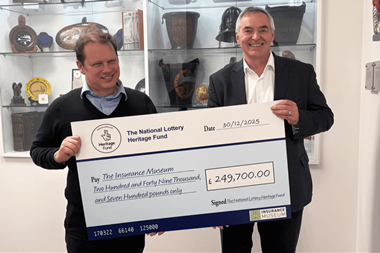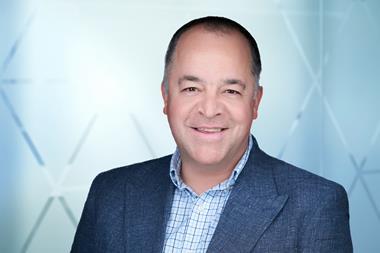Emma Jones looks at the events that led to the demise of the £70m Lloyd's connectivity platform
When a senior player at Lloyd's let slip that he would publicly support Kinnect but would prefer to put his company's money into "something that has some value", the future looked gloomy for Kinnect.
It promised so much, allowing data to be captured, stored and delivered electronically with the aim of saving time and money.
Now, with the unsurprising demise of Kinnect, the market has now been left with nothing to show for four years' work and a £70m bill.
The electronic platform began life back in April 2002 under the codename Project Blue Mountain.
Lloyd's set aside £16m to create a new website where brokers could advertise risks online, offering customers the ability to find insurers on a central trading platform.
Since its inception the risk exchange network has soared in cost, changed its identity, changed management and changed direction until finally the plug was pulled on 24 January 2006.
So, with the demise of Kinnect, the question now is: what is next for Lloyd's? Lloyd's and its players have conceded that it is time to move on, to build on Kinnect's work and make sure that effective, economic trading is achieved to make itself more competitive and efficient.
Although many, if not all, will admit that it was right to close Kinnect down, its failure is tinged with regret.
One senior market source admits the electronic platform was "clearly a colossal amount of money", but that one thing it did do was demonstrate the need for some kind of standard to be set on how data is processed.
Sean Dalton, managing director of Liberty Syndicates, insists the market does not have its head stuck in the sand, but now has to leverage Kinnect's momentum.
He says: "One thing we could do better is be more explicit about what we are looking for - what the insured and broker are looking for - and if we do that we could get a few quick wins in now."
Market vacuum
Kinnect's departure has left a huge vacuum in the market. Now the new phrase ringing around Lloyd's concrete hallways is "peer-to-peer systems".
According to Lloyd's: "There is no longer a market-wide appetite for a centrally-built electronic hub."
One industry insider believes it will inevitably go back to individual systems allowing companies to communicate with each other.
He says: "By using international ACORD standards you can communicate more easily with other people rather than going through the central hub. You can sit down with the likes of Aon and actually cook up something that works very well with the broker. When you try to do that with 100 people, that is where the difficulty comes."
But, as managing agents and brokers discuss whether it should be an individual or collective solution, Alex Letts, the chief executive of RI3K, the electronic trading platform which has a growing reputation in the reinsurance industry, believes the key lies in a carefully balanced mix of peer-to-peer systems, Xchanging and a central market place.
Letts says: "Anybody who expects to be taken seriously, who claims there is a single silver bullet that is going to solve the industry's problem, is absolutely, certifiably barking mad.
"This is complicated stuff and it's going to take one, two even three parallel, but symbiotic, solutions to help move the market forward. It's like asking 'what's going to win? The computer or the television? The shower or the bath? The car or the motorbike?' People need choices to suit differing needs, differing strategies, different occasions."
He says: "They may use all the solutions available or just one, but the key thing is to have choice. You never, ever want just a single solution, it is just not good for the market. Choice and collaboration offer a much better strategy than having to chance it and bet on one horse."
Many ways of trading
Chris Rawson, Lloyd's chief information officer with responsibility for ACORD, agrees that the market will become a multi-faceted way of trading with a number of interconnectivity services, or hubs, being set up between brokers and underwriters.
He believes peer-to-peer systems are a "great vision to head towards".
He says: "There is a fundamental foundation needed for peer-to-peer trading and that is standards. There are three components: data standards, the content of the electronic message being moved; technology standards, the standards used to transport that data; and process standards - recognised, consistent steps to follow."
Whatever and whoever takes the lead, Ascot Underwriting business development manager Torquil McLusky is clear what needs to be done.
He says: "The important thing now for the market and businesses like ourselves is to be nimble. Adapt to what is going on in the world. That is the real test that we have, to be flexible and adaptable. But anything that has a two-year implementation strategy like Kinnect is just too slow for insurance in this day and age." IT
Hosted by comedian and actor Tom Allen, 34 Gold, 23 Silver and 22 Bronze awards were handed out across an amazing 34 categories recognising brilliance and innovation right across the breadth of UK general insurance.













































